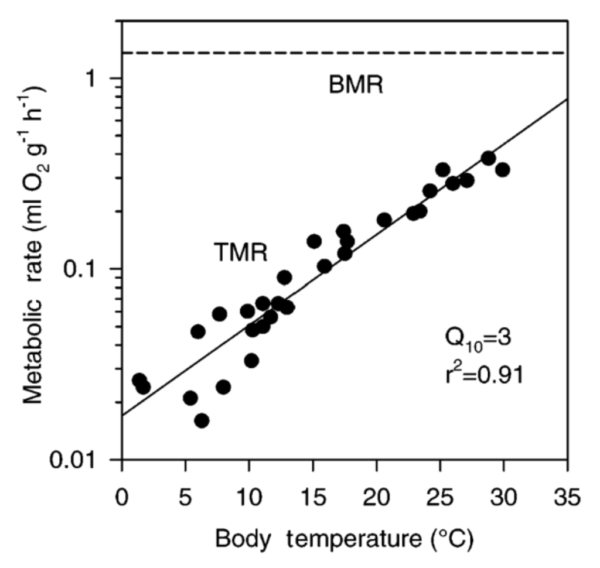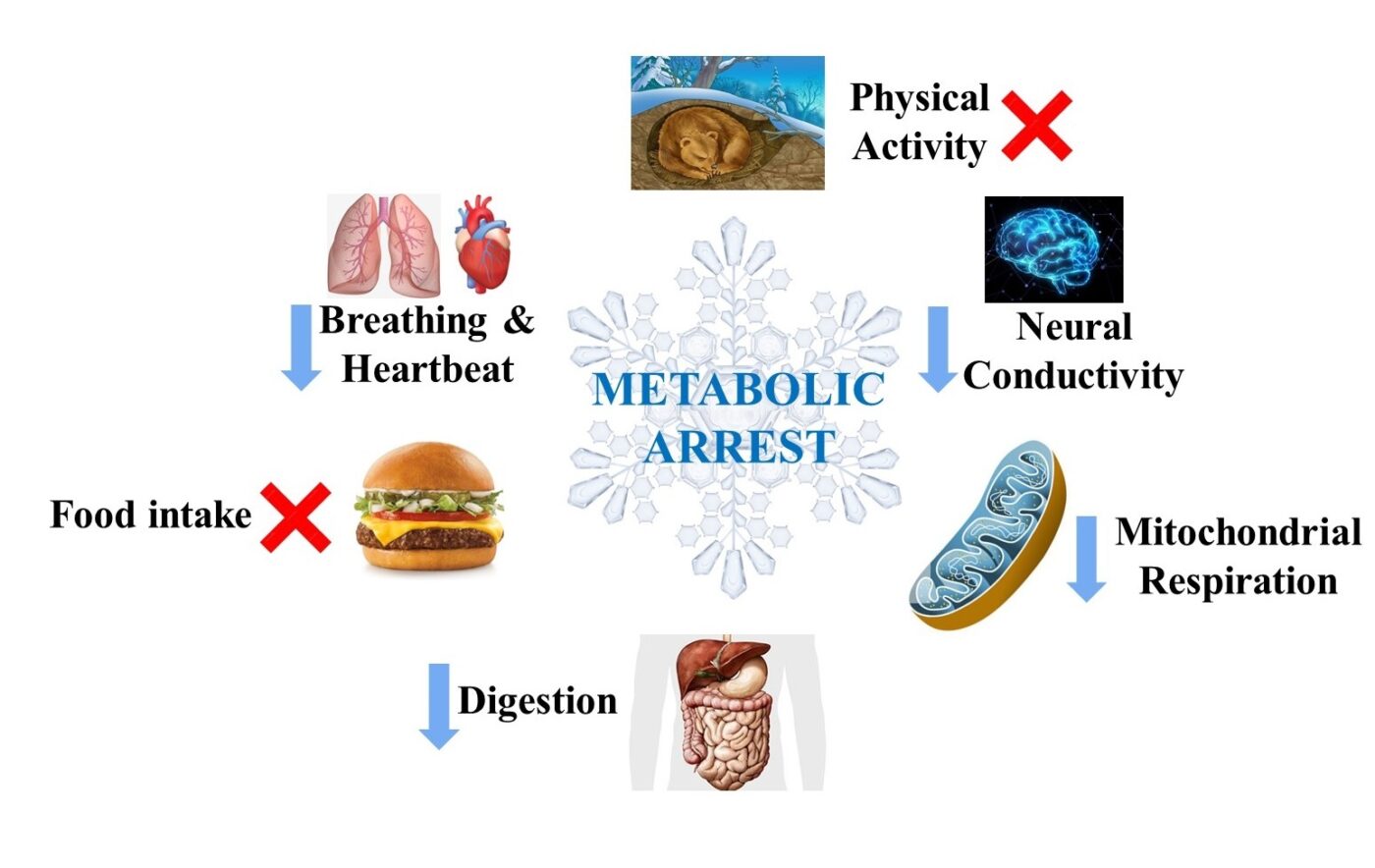
October 4, 2022
Temperature-metabolism regulation: The Q10 Rule
Key Takeaways:
- Metabolic rate of a body changes exponentially with the variation in temperature: Q10 rule.
- Decreased metabolism enables energy conservation to survive under freezing conditions.
What happens to the animals during hibernation at sub-zero temperatures? How can we explain the stories of people falling through the ice or being without oxygen for 30-45 minutes and fully recovering, for example, in News dated March 17, 2015?
Well, the answer lies in the coordination between metabolism and temperature. It is well-known that metabolism sustains life, and interestingly, metabolic rate increases exponentially with temperature. The correlation is based on the "Q10 rule" that explains the variation in metabolic rate by a specific factor for every 10°C temperature change (Fig. 1). For example, Q10 = 3 results in metabolic rate being cut to one-third for every 10°C temperature drop.

Fig. 1. Metabolic rates measured as oxygen consumption of torpid thermoconforming small hibernator, the bat (Nyctophilus geoffroyi), as a function of body temperature. Note the intercept with the normothermic body temperature of 35°C of the extrapolation of TMR is 40% below the BMR (Geiser, 2004).
So how does the Q10 rule relate to survival? Exposure to cold conditions could drop the body temperature below the freezing point of water (0°C). Some of the notable changes observed in mammals are (Fig. 2.): 1. the movement of the animal stops or decreases, 2. the rate of heartbeat and breathing slows down, 3. feeding and digestion stops, and 4. the electrical activity of the brain slows. These changes aim to minimise energy usage so that available energy lasts longer.

Fig. 2. Summary of the physiological changes that occurring during exposure to freezing conditions.
But mammals are known to maintain their body temperature. So, will this rule apply to them? During winters, mammalian body temperature is maintained by metabolically burning down the fuel (food) to generate body heat and reduce the effect of the cold environment. But, this could be challenging under certain circumstances like immediate exposure to freezing conditions (falling in the ice-cold water) or months of winters at sub-zero temperatures (scarcity of food). To endure such conditions, mammals reset their basal body temperature (rest body temperature) to a lower point for long (freezing months of winters) or short (minutes to few hours only) intervals. The readjustment of basal body temperature then lowers their metabolic rate based on the Q10 rule. Therefore, understanding this phenomenon would allow us to have better insight into the metabolic changes at the cellular level when exposed to sub-zero temperatures.
Reference:
Geiser, F. (2004, March 1). Metabolic Rate and Body Temperature Reduction During Hibernation and Daily Torpor. Annual Review of Physiology , 66(1), 239–274. https://doi.org/10.1146/annure...
We’re on a mission to enable lifesaving research and improve patient outcomes around the world.
Join Us